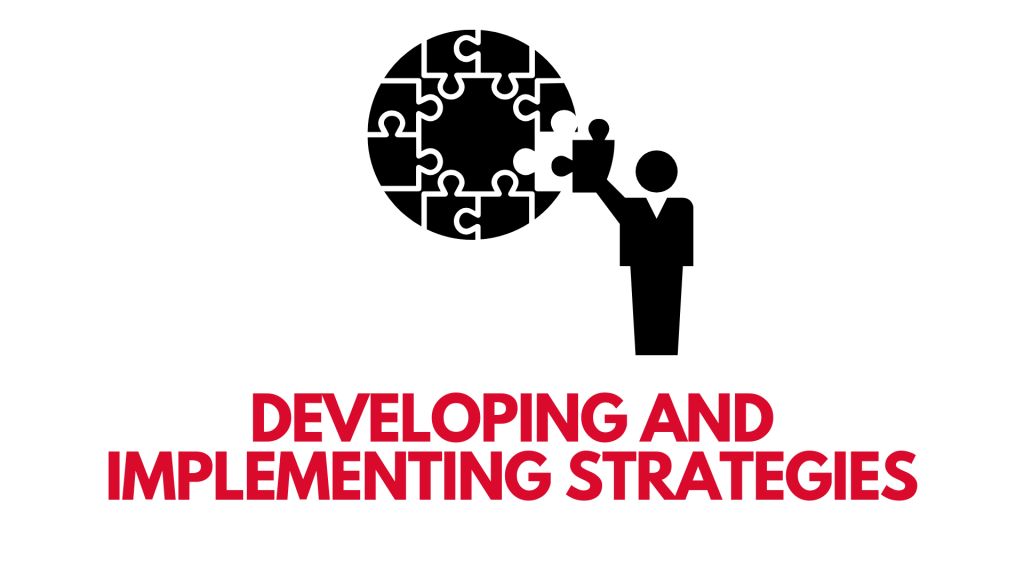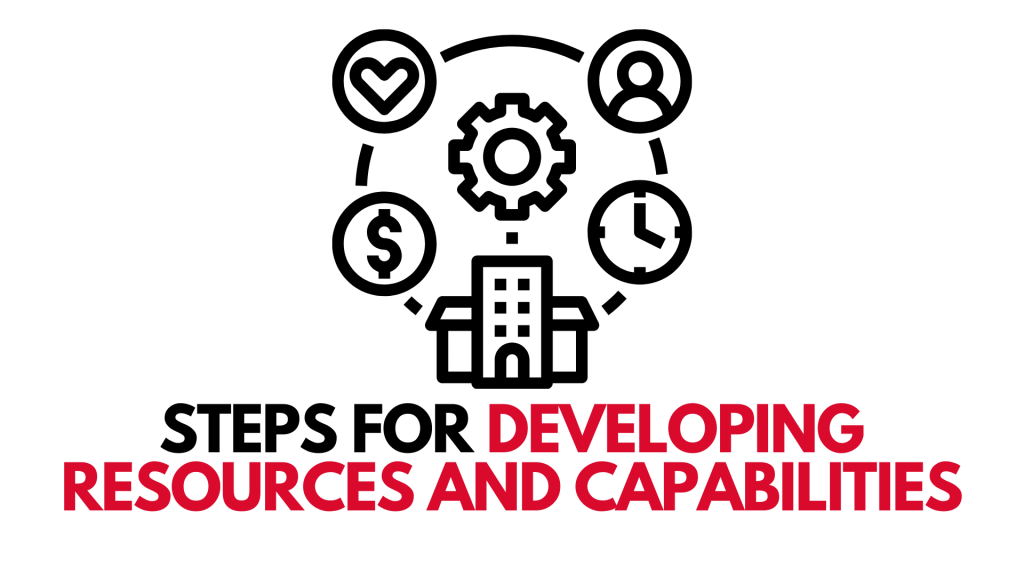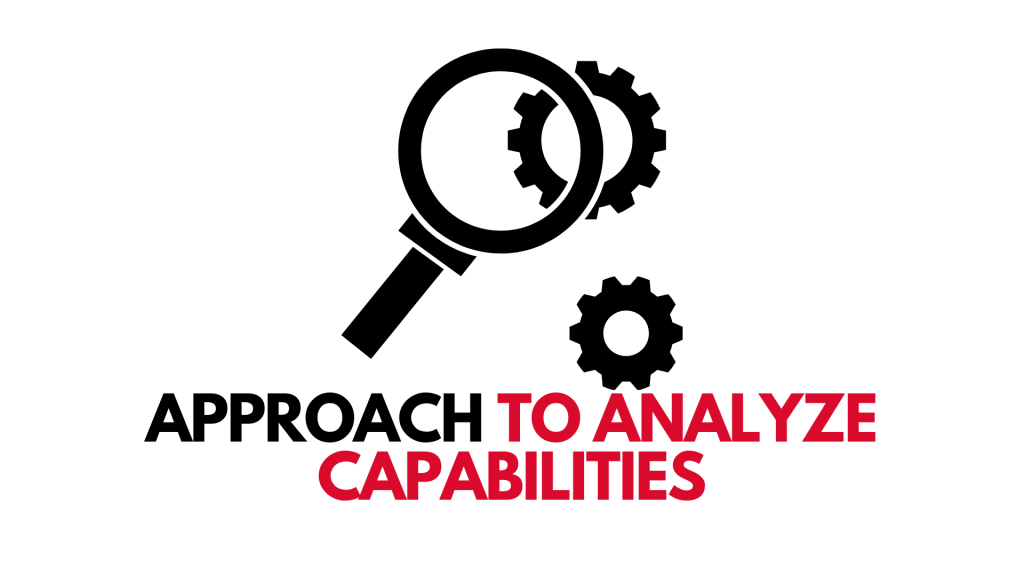For part—3 of the article on business strategies, we will discuss how you find those unique qualities that could give a company or organization a competitive advantage? Businesses battle for clients, market share, and revenue by employing methods that are based on purposeful strategy.

Developing and implementing strategies is the duty of a company’s leadership. However, when it comes to defining and implementing strategy, not all firms have the same advantages.
So, how do you develop resources and capabilities into Competitive Advantages?
Developing Your Resources and Capabilities into Competitive Advantages
You must conduct an exhaustive analysis to determine who has the competitive potential before you begin converting resources into a competitive advantage.
The first phase in the study is to evaluate your workforce’s ability and potential. The next step is to begin taking steps to turn them into a long-term competitive advantage and then take the benefits of that long-term competitive advantage.
Strategic capability is a company’s ability to use all of its talents, capabilities, and resources to gain a competitive edge and, as a result, to survive and grow in value over time. While strategic capability considers a company’s strategies, it also finds its assets, resources, and market position, predicting how successfully it will be able to implement those strategies in the future. There is no single approach or uniform gauge for measuring or noting strategic competence.

There are three steps for developing resources and capabilities into competitive advantages. They are:
1. Identifying the Essential Recourses and Capabilities
To make data-driven decisions and maximize revenue, you need total visibility into your resources’ strengths and limitations. You can employ your resources to their full extent once you know what they’re capable of.
At the same time, it’s your role to focus on their flaws and assist them in improving these abilities. It will eventually help them gain a competitive advantage.
2. Leveraging Transferability
Competencies that may be used for different tasks are transferable or portable skills. They’re a terrific method to make sure your company’s competitive advantage is as strong as possible. Multiple abilities with the same proficiency are encouraged to be developed.
With market volatility comes a slew of impromptu project requests. When your resources can apply their primary and secondary abilities to various project activities, they will be able to meet these expectations with ease. This adaptability will allow them to make the most important use of their staff and capabilities, regardless of their location.
3. Replicability
You may find yourself in a circumstance where your resources lack the capabilities you require. These skills are either hard to come by or difficult to duplicate. You can put in extra work and construct these features from the ground up in such circumstances. You can replicate historical and previous patterns to guarantee you do justice to your initiatives by using insights from history and past designs. In this circumstance, the quality of your job is not jeopardized.

Moving on with the approach to analyze capabilities, there are more critical steps. Them being:
1. Value Chain
The value chain is a classic strategy concept describing how you bring a product or service to market. Take, for example, the automobile. Any car you buy on the market goes through stages, arguably involving several different agencies. So, you begin by processing raw resources, such as iron ore, which is then transformed into steel. That steel might eventually be stamped into various body sections in the automobile’s engine. It may then be sent to an assembler, who will combine all components and parts. It eventually reaches a distributor, in this case, an automobile dealership, finally, to the customer, who may also receive service and other types of items on the back end of that purchase. The value chain is made up of all of these elements.
It’s vital to take one step further and uncover the source of those capabilities once we’ve identified those that are critical to the organization. And in our opinion, you should consider the people, systems, and processes that ultimately drive that. We commonly discuss a distinction between resources and capabilities in the strategy literature. So, capabilities refer to what you can accomplish. The assets that allow you to have specific capabilities are called resources. As a result, we have a simple two-by-two diagram that attempts to map out some of the firm’s resources and assets.
2. Accessing the Alignment of the Capabilities
an organization that positions itself to be innovative by aggressively investing in research and development and creative people. However, at the end of the day, it does not celebrate creativity, does not reward innovation, and possibly discourages failure in the organization, which we often find to be a precondition for creativity. In that instance, we might say their system is out of sync, and it’s difficult for them to maintain those human resource practices while also attempting to develop innovative and creative capabilities. This is what we mean when we say “internal alignment.”
External alignment is how our capabilities are genuinely aligned with what the market wants or what customers want. So we’re attempting to develop a value proposition.
3. Sustainability
Let’s have a look at the third essential component. That is how any capability delivers a competitive advantage that is maintained over time. So, what exactly do we mean when we say “sustainable”? The extent to which competitive advantage is gained and maintained. When we talked about competitive advantage, we may recall that it was always relative. It’s not merely that you have a lot of talent or make high-quality products. It’s important to consider how it compares to your peers and competition. Only when your capabilities are greater than those of others, do you have a competitive advantage.
We can erect barriers to imitation in a variety of ways. First and foremost, there may be legal stumbling blocks. Perhaps, as we discussed in our t-shirt vendor example, a license is required to operate an industry. But, on the other hand, maybe you have a patent on your invention, which provides you with solid legal protection for your intellectual property.
Another point to consider is that the things that are most important to us and that provide us with a competitive advantage can sometimes become what we refer to as core rigidity over time. The concept here is that your success has bred complacency in you. You may become more risk-averse and myopic, and as a result, what made you successful may become the source of your failure in the future. For example, for decades, General Motors, the US car industry’s leader, was unwilling to think that Japanese manufacturers such as Toyota and Honda posed a competitive threat to them. And one could say that this promoted complacency, which led to financial difficulties in recent years.
